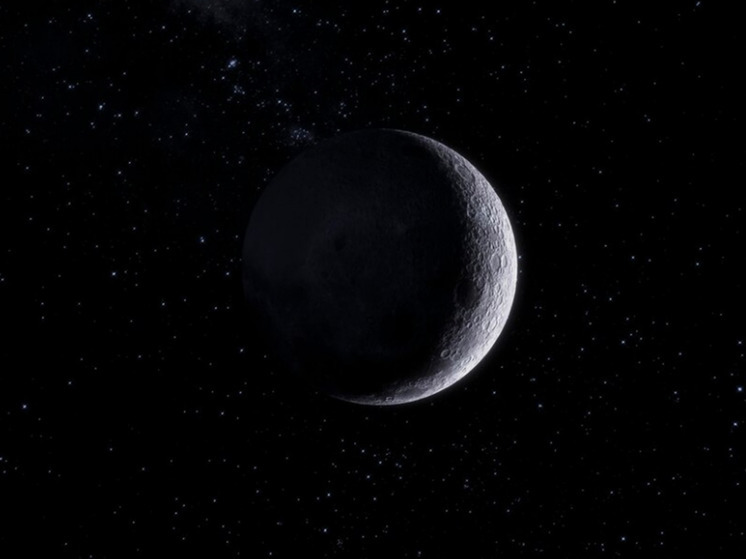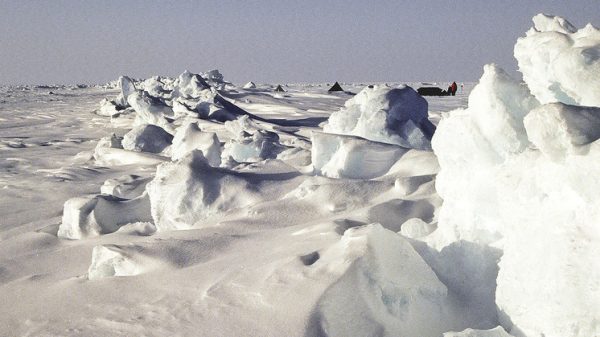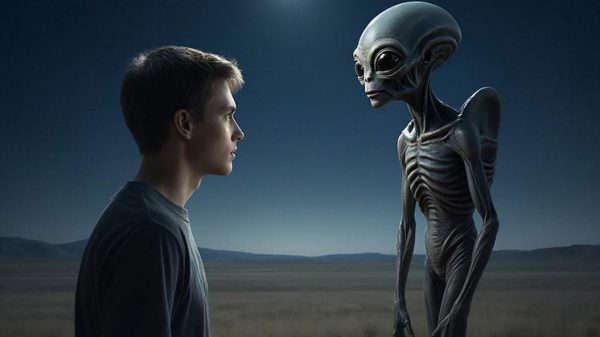“Collecting samples and taking measurements is important to solving a long-standing mystery.”
The far side of the Moon is very different from what we see — and scientists want to know why. When the Chang'e 4 mission landed in the Von Karman crater on January 3, 2019, China became the first and only country to land on the far side of the Moon—the side that always faces away from Earth. Now China is sending another mission to the far side of the Moon, and this time its goal is to return the first samples of the “hidden side” of the Moon to Earth.

The Chang'e 6 mission, launched on Friday, will spend 53 days exploring the South Pole Trench. Aitken to study its geology and topography, and collect samples from various locations throughout the crater, CNN reports.
The South Pole-Aitken depression is believed to be the largest and oldest crater on the Moon, occupying almost a quarter of the lunar surface and having a diameter of about 2,500 kilometers. The impact crater is more than 8 kilometers deep.
Scientists hope that returning samples to Earth will help answer lingering questions about the intriguing far side, which has not been studied as deeply as the near side, and will also confirm the origin of the Moon.
“The far side of the moon is very different from the near side,” says Li Chunlai, deputy chief designer of the National Space Administration of China. – The far side is mostly made up of ancient lunar crust and highlands, so there are a lot of scientific questions to be answered there.
During a NASA budget hearing on April 17, Congressman David Throne asked NASA Administrator Bill Nelson why China was sending the mission to the “reverse side” Moons.
“They are going to land a lander on the far side of the Moon, which is always dark,” Nelson replied. – We don't plan to fly there”.
The hidden side of the moon is sometimes called the «dark side of the moon,» mainly in reference to Pink Floyd's 1973 album of the same name.
But experts say the phrase is somewhat of a misnomer for several reasons.
< p>Although from our point of view the far side of the Moon may seem dark, on it the lunar day and lunar night are the same as on the near side, and it is well lit. According to NASA, a lunar day lasts just over 29 days, and a lunar night lasts about two weeks.
The same side always faces the Earth because the Moon takes the same amount of time to orbit the Earth and turn on its axis: about 27 days.
Also, the far side of the Moon was more difficult explore what led to the nickname “dark side” and created an atmosphere of mystery, notes CNN.
«People always want to know what's on the other side of the mountain and in the part you can't see, so it's kind of a psychological motivation,» says Professor Renu Malhotra of the University of Arizona in Tucson. – Of course, we've sent space probes that have orbited the Moon, and we have pictures, so in some ways it's less mysterious than it used to be.
Several spacecraft, including NASA's Lunar Reconnaissance Orbiter, which Constantly circling and taking pictures of the lunar surface have helped shed light on the Moon.
Lunar rover «Yutu-2», which «Chang'e-4» released in 2019, also examined the loose deposits of crushed rock and dust covering the floor of the Von Karman crater, located in the larger South Pole-Aitken Trench.
But returning the samples to Earth would allow the use of the newest and most sensitive technology to analyze lunar rocks and dust, potentially revealing how the Moon came to be and why its far side is so different from its near side.
Despite years of collecting orbital data and samples collected during six Apollo missions, scientists are still trying to answer key questions about the Moon.
«The reason the far side is so attractive is because it's so different from the side of the Moon we see up close,» said Noah Petro, NASA's Lunar Reconnaissance Orbiter project scientist. and Artemis III, a mission that aims to land humans on the Moon for the first time since 1972. “Throughout human history, people have been able to look up and see the same surface, the same side of the Moon.
But in 1959, the Soviet Union sent a probe that flew past the far side of the Moon and took the first pictures for humanity, recalls CNN.
“We saw this completely different hemisphere: not covered with large flows of volcanic lava, pitted with craters, with a thicker crust. «It just tells a different story than the near side,» Noah Petro said.
Returning samples with robotic missions and landing humans near the transition between two lunar regions at the south pole as part of the Artemis program «will help tell more.» the complete history of the Moon, which we now lack,” he said.
While scientists understand why one side of the Moon always faces Earth, they don't know why that side always faces our planet. But this may have something to do with the asymmetry of the Moon, says Professor Malhotra.
“There is some asymmetry between the side that faces us and the other side,”, she said. “What exactly caused this asymmetry? What exactly is this asymmetry? We understand little about this. This is an important scientific question.”
Orbital data also showed that the near side has thinner crust and more volcanic deposits, but answers to why this is so elude researchers, said Brett Denevi, a planetary geologist at the Johns Hopkins University Applied Physics Laboratory.
“It has a different geochemical composition with some strange elements that produce extra heat. There are many models to explain why the near side is different from the far side, but we don't have the data yet,” says Brett Denevi. – Therefore, flying to the far side of the Moon, collecting samples and conducting various geophysical measurements is really important to unravel this long-standing mystery.
"Chang'e-6" is just one mission aimed at the far side of the Moon, as NASA plans to send robotic missions there as well.
Brett Denevi is involved in developing the flight concept for the Endurance rover, which will make a long journey through the South Pole-Aitken Basin to collect data and samples before delivering them to the Artemis landing site near the lunar south pole. Astronauts can then study the samples and determine which ones should be returned to Earth.
One of the most fundamental questions scientists have tried to answer is how the Moon formed. The prevailing theory is that some object collided with the Earth early in its history, and a giant piece of debris flew off our planet to form the Moon.
Scientists also want to know how the original lunar crust formed.< /p>
Volcanic flows have created dark spots on the Moon, while lighter areas of the surface represent the original lunar crust.
“We think that at some point the Moon was completely molten, and it was an ocean of magma, and as it solidified, minerals floated to the surface of that ocean, and this is the lighter terrain we can see today , says Brett Denevi. – Getting to the truly large expanses of untouched terrain on the far side is just one of the goals.
Meanwhile, Denevi says, studying the impact craters that dot the lunar surface provides insight into how things happened in the early days Solar system at a critical moment, when life was just beginning to form on Earth.
“As collisions occurred on the Moon, collisions occurred on Earth at the same time, – Noah Petro says. – And so when we look at these ancient events on the Moon, we learn a little about what is happening on Earth.
According to Professor Malhotra, a visit to the South Pole-Aitken Basin could be the beginning of unraveling many lunar secrets Although researchers believe they have an idea of when the crater formed, perhaps 4.3 to 4.4 billion years ago, collecting rock samples can provide an accurate idea of its age.
“ Many scientists are confident that if we find out the age of this depression, the professor says, we will be able to reveal all the secrets of the history of the Moon.”























































Свежие комментарии